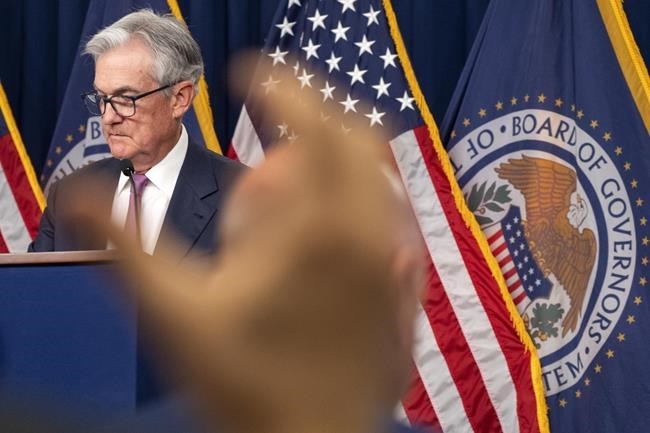WASHINGTON (AP) — Some Federal Reserve officials pushed to raise the Fed’s key interest rate by one-quarter of a percentage point at their meeting last month to intensify their fight against high inflation, though the central bank ultimately decided to forgo a rate hike.
In a sign of growing division among the policymakers, some officials favored a quarter-point increase or said they “could have supported such a proposal,” according to the minutes of the June 13-14 meeting released Wednesday. In the end, the 11 voting members of the Fed’s interest-rate setting committee agreed unanimously to skip a hike after 10 straight increases. But they signaled that they might raise rates twice more this year, beginning as soon as this month.
In Fed parlance, “some” is less than “most” or “many,” evidence that the support for another rate hike in June was a minority view. And some who held that view were likely unable to vote at the meeting; the 18 members of the Fed’s policymaking committee vote on a rotating basis.
Though last month's vote to keep rates unchanged was unanimous, it is relatively uncommon for the central bank to stipulate in the minutes of Fed meetings that some officials had disagreed with the committee’s decision.
Overall, the minutes echoed previous comments from Chair Jerome Powell that the Fed will likely keep raising rates this year, with a hike at its next meeting in three weeks considered highly likely.
“Barring any surprises, the Fed will likely increase rates in July after the hawkish pause in June,” said Jeffrey Roach, chief economist for LPL Financial.
Twelve of the 18 members of the rate-setting committee have projected at least two more rate hikes this year, according to the members' projections released last month. Four envisioned one more increase. Just two officials foresaw keeping rates unchanged.
Raphael Bostic, president of the Federal Reserve Bank of Atlanta, suggested in remarks last week that he had supported keeping rates unchanged last month. Bostic is not currently a voting member.
“I believe we are just now beginning to see signs that the cumulative effects" of the Fed's rate increases — the fastest in four decades — "are showing up in the real economy,” Bostic said.
“We are making progress on reducing inflation,” he added.
Many of his fellow Fed officials, though, don't agree. The policymakers who had favored a rate hike last month felt that “there were few clear signs that inflation was on a path to return” to the Fed’s 2% objective anytime soon, the minutes said. The decision to forgo an increase left the Fed’s key rate at about 5.1%, the highest level in 16 years.
At the same time, a majority of officials signaled that they expect to raise rates twice more this year — once more than had previously been expected. In their quarterly economic projections, the policymakers also forecast higher inflation and modestly stronger growth than they had envisioned in June. Those upward revisions are a sign that the economy has been more resilient than Fed officials have expected.
The Fed’s aggressive streak of rate hikes have made mortgages, auto loans, credit cards and business borrowing increasingly expensive.
Many economists described the message from last month’s Fed meeting as a blurry one. On the one hand, the central bank chose not to raise borrowing costs. And Powell said at a news conference that the Fed was slowing its rate hikes to allow time to assess their impact on the economy.
On the other hand, the officials' forecast for two more rate hikes suggested that they still believe more aggressive action is needed to defeat high inflation. And Powell has said more rate hikes are likely this year.
Speaking at a panel discussion with other top central bankers last week, Powell suggested that "the bottom line is that (interest rate policy) hasn’t been restrictive enough for long enough.”
Most other central banks in developed countries are taking a similar approach. ECB President Christine Lagarde and Bank of England Governor Andrew Bailey indicated last week that they expect to keep interest rates high for an extended period. They spoke on the same panel as Powell.
Some economists expect the Fed to raise rates at every other meeting as it seeks to pull off a difficult maneuver: Raising borrowing costs high enough to cool the economy and tame inflation yet not so high as to cause a deep recession.
Powell has said that while a hike at every other meeting is possible, so is the prospect that the Fed might decide to raise rates at consecutive meetings. Economists and Wall Street traders consider a rate hike at the Fed's next meeting in three weeks to be all but assured.
The Fed’s staff economists have continued to forecast a “mild recession” for later this year, though they also said the possibility that the economy will continue to grow slowly was “almost as likely” as a downturn.
Christopher Rugaber, The Associated Press

